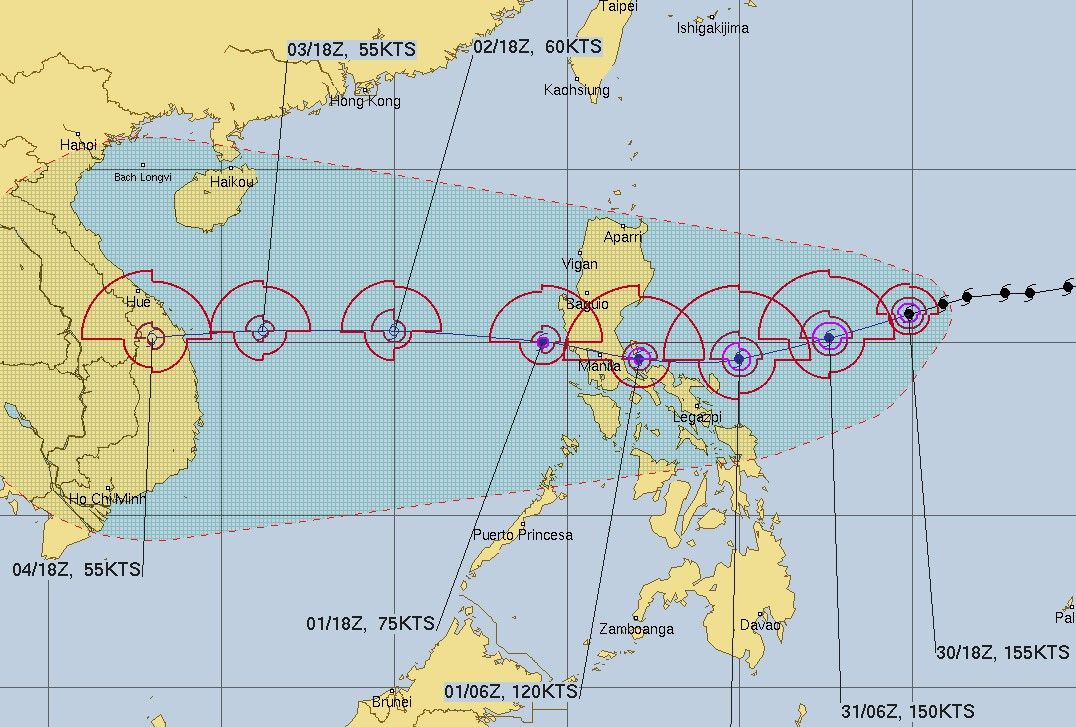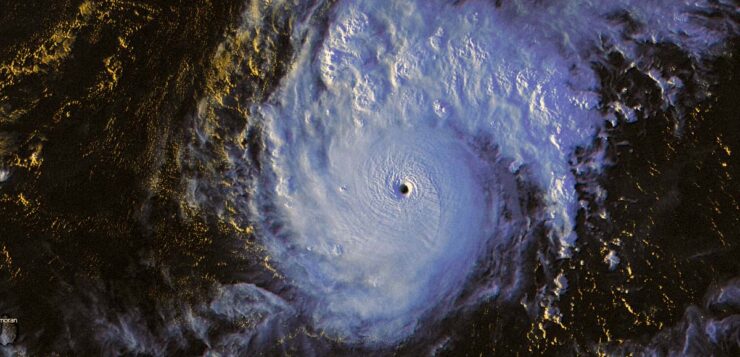
At a Glance
- Goni is one of the strongest storms to ever make landfall on Earth.
- Flooding rain, catastrophic winds and battering surf are expected in the Philippines.
- The Philippines and Vietnam have both suffered multiple cyclones in recent weeks.
Super Typhoon Goni made landfall with sustained winds of 195 mph in the eastern Phillippines early Sunday. This makes Goni the strongest typhoon to make landfall anywhere on earth since 2013’s Super Typhoon Haiyan, which also made landfall in the Philippines.
Goni is locally known as Rolly in the Philippines.
Catastrophic wind gusts are expected in a small area near the landfall area. Damage may be tornado-like.
Goni is expected to rapidly weaken as it moves through the Philippines but could bring typhoon-force winds to parts of the greater Manila metro area on Sunday. Flooding rain, storm surge and high seas are expected to batter the northern and central Philippines through the weekend. Mudslides are expected.
Then, Goni is expected to cross the South China Sea while continuing to weaken as it approaches southern Vietnam.

Only a few storms each year reach the equivalent strength of a super typhoon, those with winds of 160 mph or more. Even fewer have ever attained wind speeds as high as 195 mph.
Goni made landfall on the Philippines’ island of Catanduanes with an estimated pressure of 884 mb, which is among the top 15 most intense typhoons in the basin. This pressure would make Goni the second most intense cyclone in the Atlantic if it were in that basin, behind Hurricane Wilma.
This strength has only been tied or surpassed by a handful of storms.
Most recently, Hurricane Patricia in 2015 attained sustained winds of 215 mph off the southwest coast of Mexico.
These winds were directly measured by the Hurricane Hunters while Goni’s winds are so far only estimated by satellite measurements due to the lack of hurricane reconnaissance in the western Pacific Ocean.
Impressively, this extreme landfall intensity occurs in the same part of the same country where Super Typhoon Haiyan made landfall at a similar intensity in 2013. Haiyan caused nearly $2 billion in damages and killed more than 6,300 people
Nearly 800,000 people were evacuated ahead of Super Typhoon Haiyan.
Comparatively, nearly one million people have evacuated ahead of Goni, which is expected to pass near the country’s most populated cities of Manila and Quezon City.
Manila’s airport also closed, according to their facebook page.
Deadly October in the Philippines and Vietnam
A persistent storm track has taken storm after storm through central Vietnam, and recently the Philippines has gotten involved.
Most recently, in the last week, Typhoon Molave took a very similar storm track across the central Philippines and then central Vietnam, but was considerably weaker in the Philippines.
Molave killed more than 50 people in the two countries, including 16 in the Philippines.
The devastation has been even more widespread in Vietnam, where tropical storms Linfa and Nangka, the remnants of two other tropical systems and Molave moved across the country in October alone.
More than 200 people have died, many of which died in flooding, in Vietnam during the month.
At least one location in central Vietnam received more than 125 inches of rainfall during the month of October.
Behind Goni, another system named Atsani is expected to near the Philippines’ northern island of Luzon by the middle of the week as a typhoon.
The Weather Company’s primary journalistic mission is to report on breaking weather news, the environment and the importance of science to our lives. This story does not necessarily represent the position of our parent company, IBM.





